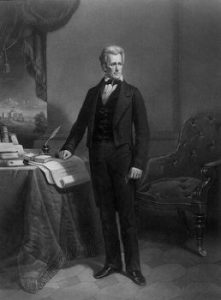The Fifth Census: Census Day was June 1, 1830.

on Census Day, June 1, 1830.
Authorizing Legislation
President John Q. Adams, in his fourth address to the U.S. Congress on December 28, 1828, recommended starting the census earlier in the year than August 1. He also proposed that the collection of age data be extended from infancy, in intervals of 10 years, “to the utmost boundaries of life.” These changes were incorporated into the census act of March 23, 1830.
Enumeration
As in the previous census, marshals or their assistants visited every dwelling house for enumeration, or, as the law stated, made a personal inquiry of the head of every family in their district. Because of delays in the compilation of the census returns, the filing date was extended to August 1, 1831.
In 1830, enumerators used uniform printed schedules for the first time. In prior censuses, marshals had used whatever paper was available and had designed and bound the sheets themselves. Because federal census clerks did not have to sort through a huge variety of schedules in 1830, they were able to tabulate census results more efficiently.
The 1830 census counted the population only. After the failures of the past two censuses, no attempt was made to collect additional data on manufacturing and industry in the United States.
Further Information
- A wide variety of historical statistics from this and other decades is available in Historical Statistics of the United States: Colonial Times to 1970. It is available as a PDF [74.4MB] or 2-part ZIP file: Part I [52.2MB] | Part II [66.1MB].
- Reports and statistics from the 1830 census.
- History and Growth of the United States Census: 1790-1890 [PDF 117MB], by Carroll D. Wright and William C. Hunt.
Information provided from Census.gov

